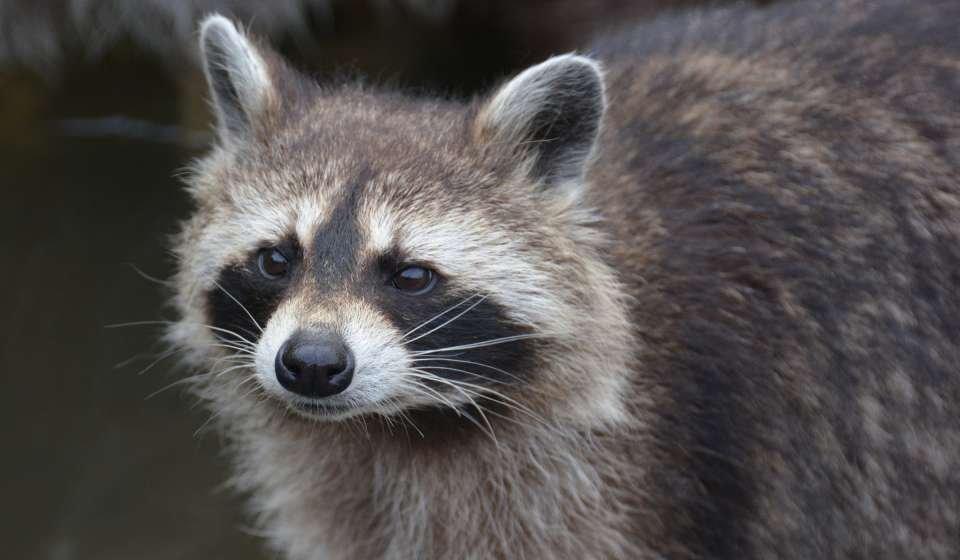As a result of global change, the composition of animal and plant species in many habitats is undergoing major changes. Invasive, alien species such as Egyptian geese, raccoon dogs, nutrias, and raccoons are playing a significant role in the decline of biodiversity. In Germany, there are now more raccoons roaming through forests and cities than in any other country outside their native range. “Originally, raccoons (Procyon lotor) hail from North America, but it is estimated that there are now between 1.6 and 2 million of these masked mammals in Germany,” explains Prof. Dr. Sven Klimpel from the Senckenberg Biodiversity and Climate Research Center and Goethe University Frankfurt, and he continues, “For decades, this invasive species has been steadily expanding its range in Germany, and from there across much of Europe. In our new study, we have now classified this expansion both spatially and temporally. Our aim is to achieve a successful and sustainable management of invasive species such as the raccoon through a comprehensive understanding of the population dynamics during the invasion process.”
In addition, the economic consequences of invasive alien species are becoming ever more apparent – for example through damage or costly countermeasures, particularly in agriculture and the healthcare sector. “It is therefore necessary to increase our understanding of the spatial and temporal dynamics of these species’ expansion and the underlying drivers. In order to develop effective countermeasures, it is essential to assess the earlier, current, and future stages of the invasion process, as the recommended measures and their chances of success depend largely on the situation at hand,” says Klimpel.
Whether an animal species can establish itself permanently in a new area initially depends on the prevailing environmental conditions. If these match the species’ ecological requirements in their native range, colonization is possible. Equally decisive are biological interactions with other species – especially in the early phase when the population of the introduced species is still small. Favorable conditions, strong competitive ability, repeated introductions, and sufficient resource availability, on the other hand, can favor rapid expansion. “All of these factors apply to the raccoon: It has a broad ecological niche, is extremely flexible as an adaptable omnivore, and also feels at home in the proximity of human settlements. As a result, it can compete with native species and even displace them in the long term, which can already be observed today with amphibians and reptiles, for example. Nevertheless, systematic methods for a comprehensive and comparable recording of the spatial distribution of raccoons have been lacking to date – and this is precisely where our study comes in,” explains the scientist from Frankfurt.
To investigate the expansion of the raccoon population in Germany, the research team, headed by first author Dr. Sarah Cunze from Goethe University Frankfurt, analyzed hunting statistics covering 21 years from 398 German districts. These data are regularly collected by the responsible authorities and are considered a reliable indicator of long-term changes in wild animal populations. In addition to the officially bagged animals, the analysis also included reports of road-killed animals and data from the ZOWIAC research project.
“It has become apparent that raccoons go through different phases during their dispersal – from initial sightings to rapid growth and stabilization at a high level. Our newly developed method makes it possible for the first time to precisely record these dispersal phases at a regional level,” explains Cunze. The analysis shows that the initial expansion “hotspots” were in northern Hesse (e.g., in Kassel) and north-eastern Brandenburg. The data coincides with known historical events. in 1934, two breeding pairs of raccoons were released for hunting purposes near Lake Edersee in northern Hesse. Presumably, additional intentional or unintentional releases occurred over time, which enabled the establishment of a stable population there at an early stage. A second founder population in Brandenburg can be traced back to 25 animals that escaped from a fur farm in Wolfshagen in 1945. “In these regions, the spread of the predominantly crepuscular and nocturnal predators is in a late phase of the invasion, in which population growth is gradually reaching saturation or has already stabilized at a high level and is only subject to natural fluctuations. In other parts of Germany, particularly in the southwest, the raccoon is still in an early expansion phase,” adds Cunze.
According to the researchers, hunting data is an effective tool to better understand the spread of invasive species such as the raccoon. By linking temporal trends with spatial expansion, this approach provides insights into the saturation of populations in already established areas and at the same time shows the ongoing dispersal into adjacent regions. This method thus provides a practical tool for evaluating invasion processes and supports targeted management strategies at different stages of establishment, according to the study.
“A better understanding of the phase-dependent development of raccoon populations provides the basis for more effective control measures to contain the expansion and reduce ecological damage,” summarizes Klimpel, and he adds, “The method offers a practical framework for assessing invasion dynamics and can be transferred to other invasive and alien animal groups and neighboring countries. Our study thus contributes to a deeper understanding of biological invasions and provides valuable insights for more effective conservation planning.”
Senckenberg – Leibniz Institution for Biodiversity and Earth System Research // Senckenberg Gesellschaft für Naturforschung
Senckenberganlage 25
60325 Frankfurt
Telefon: +49 (69) 7542-0
Telefax: +49 (69) 746238
http://www.senckenberg.de
Senckenberg Biodiversität und Klima Forschungszentrum
Telefon: +49 (69) 798-42237
E-Mail: sven.klimpel@senckenberg.de
Leitung Pressestelle & Social Media
Telefon: 06975421434
E-Mail: judith.joerdens@senckenberg.de
![]()
